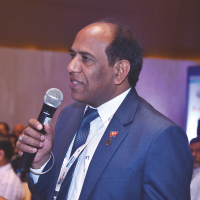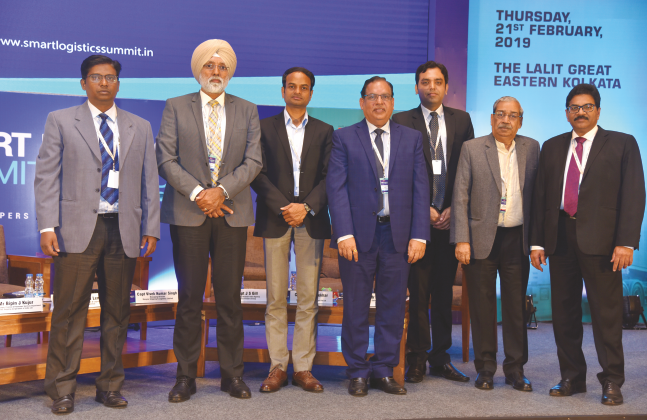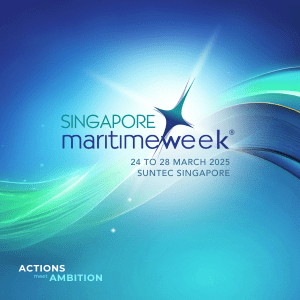Growing coastal movement and transhipment on the east coast and high cost of logistics at Indian ports was brought to the fore. Shippers discussed their logistics bottlenecks and how they were being overcome
Ramprasad, Editor in Chief and Publisher, Maritime Gateway moderated the session on coastal cargo movement and transhipment. He began the session by stating that despite the coastal shipping being around for quite a while, it was only recently that it had taken off, with Shreyas Shipping being the lone crusader, to make this mode operational. Shreyas Shipping had Invested in ships and had forged ahead into areas where nobody had yet dared to tread. They convinced shippers to move to coastal shipping, the challenges notwithstanding.
He set the ball rolling by asking Capt Vivek Kumar Singh, Managing Director, Shreya Shipping and Logistics Ltd, the problems he faced in coastal shipping on east coast of India. It was a difficult and not a matured market. Was there a possibility for future growth and opportunity for more commodities to shift to coastal mode?
Capt Singh, by way of a prelude stated that coastal shipping was pioneered by them in the beginning of this century both in the domestic carriage as well as coastal transhipment. But the movement had been slow with many constraints and difficulties. There was no government support earlier. It was only recently that more attention was given to this sector. In the last couple of years the coastal movement had considerably increased. Last year they had moved 6 million tons of cargo in containers through coastal movement. The growth has been almost 25%, he proudly stated.
In the coastal transhipment side too, in the last two years alone, they had moved almost 350,000 teus between two Indian ports which had mostly been on the east coast side. Most of the transhipment of containers happened outside India because ports like Kolkata, Goa. Mangalore, Cochin or Tuticorin, were not large enough to accommodate mainline vessels. However each terminal wanted to handle only direct cargo and not the transhipment cargo which was the reason why we had lost out to other countries, he stated.
Most of the coastal movement of domestic cargo happened in the west coast of India. The challenge was to move the cargo to the east coast of india. Moving containers from Gujarat to Kolkata by road was 2300 kms as compared the coastal route which was almost double that distance. To leverage the economies of scale, large vessels were needed to be used. But these large vessels could not call Kolkata port owing to draft restrictions. Therefore perforce transhipments had to be done at Visakhapatnam on to smaller vessels for on-carriage to Haldia, even though the cargo was destined for Kolkata. Since domestic cargo tended to be heavy “they would deadweight the vessel with just 150 containers.” which increased the logistic costs.
The main problem in India was that there was no movement in the reverse leg. From north to south the vessels go full, however in the reverse direction they came empty. Though there was enough volume of cargoes going from west to east coast, there was nothing moving in the reverse direction. That was the reason why in the reverse journey they moved their vessels to Jebel Ali, with exim cargo for better utilization of the vessel.
If costs are compared port to port vis a vis road, the costs were definitely cheaper. However if comparison are made from door to door with last mile connectivity upto 200kms, the various components added up to make the transportation by sea more expensive. However other issues have continued to remain. The port charges in Indian ports were among the highest in the world – at least 3 to 4 time higher. It was for this reason why the transhipment of exim containers had moved out of Indian ports and also made domestic movement of cargo more expensive. The transhipment that was happening in India was only a fraction of the number in the neighbouring foreign ports. It was difficult for the numbers to increase, unless the Indian port charges were made competitive.

Could Indian ports be a viable transhipment hubs for the exim cargo, was the question that Capt J S Gill, Managing Director, Express Feeders Group sought to tackle. Transhipment ports like Singapore, Colombo or Port Klang had the advantage of being on the long haul route. The vessels could tranship without much deviation and incurring any additional cost. Among the Indian port Vizhinjam Port was most favourably positioned along this route. If the Vizhinjam Port became operational would the shipping lines make the shift? What made Tanjung Pelepas happen? Why did Maersk Line shift from Singapore to Tanjung Pelepas? Vallarpadam struggled to survive as a transhipment port due to inadequate draft and restrictive cabotage rules. Why was Krishnapatnam was flourishing as a transhipment port and not Chennai. At Krishnapatnam port, Capt Gill said that there was efficiency and the willingness to open up. They are not restricted by TAMP or by vessel or container related costs or any other restrictions. All that was to the benefit of the end user ie the shipping lines. The flexibility at Krishnapatnam port enabled them to load record cargo to Kolkata. Policies needed to be consistent to attract shipping lines, he emphasized.
A company of the size of Tata Steel required extremely complex logistics operations. Surya Narayan Lenka, Head Container Management and Logistics Services, Tata Steel Limited expounded on problems and difficulties he faced in the logistics movement as an end user. For every million tonne of finished goods they required 3 million tons of raw material and one million tons of coal. They imported about 15 million tons of raw material that translated to moving 40 tons of material every single day without disruption to various locations which required movement of 10 rakes everyday. They could not afford to be dependent upon any single mode of transport. Therefore the import of material was apportioned to 4 or 5 ports and coastal mode of transport was used for transport of material. There was always a shortfall in the requirement of rakes. To mitigate this problem the raw material for the plants were fed from different ports. “If we rely only on rail we would be highly uncompetitive.” It was truly a multimodal movement, he said. There were issues with regard to vessels. The number of vessels required to transport steel was limited due to cabotage rules. The turnaround time was a matter of concern. It all boiled down to the efficiency of a particular port which had an impact on cost. There were also infrastructural problems. In the coastal scenario there were no dedicated berths, or tugs.
Bipin J Kujur, Senior Manager, Coastal and Passenger Services Department, Shipping Corporation of India Ltd, conceded that in coastal shipping, infrastructure was lagging. Absence of long term policy framework, excessive documentation paperwork, lack of bunkering facilities at most minor and intermediary ports, high cost of bunker for coastal shipping, stringent specification for construction of vessels, all lead to its high cost. There were lack of separate berthing and handling facilities for coastal shipping in major ports.
There was discriminatory taxation for seamen which discouraged quality officers to join. Capt Bijay Shekar, General Manager, Navayuga Container Terminal Pvt Ltd, dwelt on the advantages of the Navyuga terminal which had three evacuation points to take care of any future contingencies. Having sufficient capacity was necessary but it was equally important to have an efficient evacuation system. Scanners have been installed at the terminal which would enable the Custom officers to examine every container from his office premises.They had a berth dedicated for coastal shipping which would have the facility of berthing on arrival.
On the transhipment issue Capt Shekar was of the opinion that a beginning had to be made, involve all the stakeholders to see how it could be made viable. The terminal was now a flourishing transhipment port.with Shreyas Shipping and Express Feeders extensively using it. He was confident that the transhipment figures would consistently rise.
He had two requests for the stakeholders. First one was to demand for berthing on arrival for coastal shipping in Kolkata port. Indian ships should not wait at the anchorage, he contended. Secondly he urged the stakeholders to use the Haldia as a transhipment port till better facilities were available in Kolkata.








